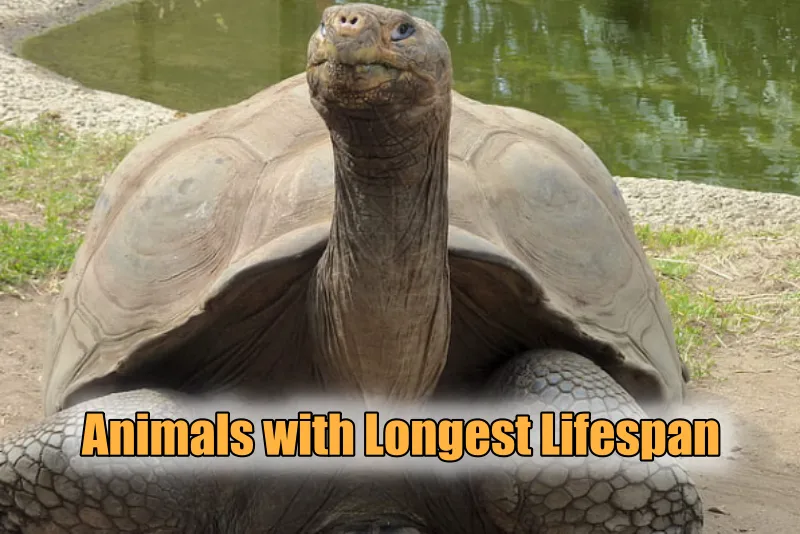Every living organism on this planet is bound to die. Some insects like the Mayfly live only a day, while some animals continue to live for centuries. The lifespan varies from individual to individual, and keeping the wide array of diversity of our planet in mind; lifespan becomes an essential comparison factor among species.
Though immortality is a myth, some animals in the world have managed to champion it, with a lifespan so long; that it appears they are almost biologically immortal.
A common question must have come to almost all curious minds; Which Animals have the Longest Lifespan or which Animals are immortal? Therefore, we have come up with today’s write-up, Top 17+ Animals with Longest Lifespan (Immortal animals). So without further delay, let’s get things rolling.
Top 17 Animals with Longest Lifespan
17) Oreos
Oreosomatidae, commonly known as oreos, are marine fish found in the Southern Hemisphere. They inhabit the continental slopes down to 1,000 meters deep. Most species are 43 cm long, with the largest reaching 60 cm.
Despite their small size, Oreos have incredibly long lifespans, up to 210 years. Their main diet consists of small fish, copepods, amphipods, shrimp, krill, and small cephalopods.
- Genus: Oreosomatidae
- Location: Southern Hemisphere
16) European eels
https://in.pinterest.com/pin/757449231093225578/
The European eel is a snake-like, catadromous fish. They can typically grow 60–80 cm long. The animal is noted to have the longest lifespan. One of its specimens lived for 155 years. Looking at this, we came across another captive specimen that has lived over 80 years, with one specimen, “the Brantevik Eel,” living for 155 years in a family home in Brantevik, Sweden. The species’ lifespan in the wild is unknown.
- Genus: Anguilla
- Scientific name: Anguilla anguilla
- Location: Europe
15) Bigmouth buffalo
The bigmouth buffalo is native to North America. It is the largest species in the Catostomidae family and one of the longest-lived and latest-maturing freshwater fishes.
This species can live 127 years and reproduce infrequently, showing no age-related declines even at a century old. You can also call this species the gourdhead, marblehead, redmouth buffalo, buffalofish, Bernard buffalo, roundhead, or brown buffalo.
- Genus: Ictiobus
- Scientific name: Ictiobus cyprinellus
- Location: North America
14) Orange roughy
The orange roughy is commonly known as the red roughy, slimehead, or deep sea perch. These are large deep-sea fish in the slimehead family. With a lifespan of over 200 years, it is crucial for commercial deep-trawl fisheries. Do you know the orange roughy is slow-growing and late to mature, making it vulnerable to overfishing?
- Genus: Hoplostethus
- Scientific name: Hoplostethus atlanticus
- Location: United States and New Zealand
13) Schmidtea Mediterranea
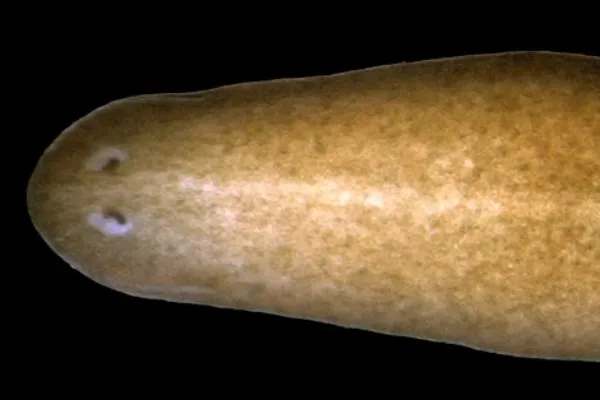
- Genus- Schmidtea
- Scientific name- Schmidtea Mediterranea
- Location- coastal areas of the western Mediterranean
Now, we are going to talk about another micro-organism belonging to the group called Planaria or Triclad. The Schmidtea Mediterranea is a freshwater planaria that is widely studied as an ideal model for regeneration by stem cells.
This group of planaria is not immortal in the true sense but can regrow into a new being even from a fragment of their bodies. They have pluripotent stem cells in abundance, which have immense regenerative capabilities.
Neoblasts, another name for these stem cells, make the Planaria continue living even after losing a major portion of their bodies.
12) Rockeye rockfish
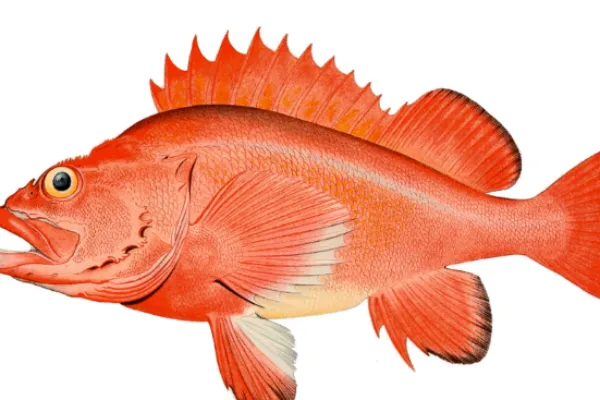
- Genus- Sebastes
- Scientific name- Sebastes ruberrimus
- Location- Along the East Pacific Ocean
The next species on our list of Top 15 Animals with Longest Lifespan is the Rockeye Rockfishes. Known to live for an estimated 200+ years, this rockfish species is undoubtedly one of the longest-living fishes on the planet.
They grow up to lengths of 3 ft or more, with their weights being roughly around 6 kg. They live in cold waters in the temperature range of 0-5 degrees Celsius and are deepwater fishes. Shrimps, fish, crabs, and mysids comprise a major portion of their diet.
11) Bowhead Whales

- Genus- Balaena
- Scientific name- Balaena mysticetus
- Location- the Arctic and Subarctic waters
The next animal on our list of Immortal animals, with 200+ years of lifespan, is the Bowhead Whales. They hold the crown for the longest-living mammal in the world. Bowhead Whales are large species of Whales with lengths of nearly 62-65 feet, weighing nearly 200,000 pounds.
Even with such long lifespans, the Bowhead Whales have the blade of extinction hanging over them, thanks to the over-exploitive activities of humans, coupled with global warming and climate change.
They have the ERCC1 gene, responsible for genetic repair and even cancer resistance. Bowhead whales have low metabolism rates, which couples up with other factors to make them the longest-living mammals.
10) Galapagos Tortoise

- Genus- Chelonoidis
- Scientific name- Chelonoidis niger
- Location- endemic to the Galapagos Islands
Next up on our list of Animals with the Longest Lifespan, we have the longest-living terrestrial vertebrate, the Galapagos Tortoise. Though the longest-living one was 177 years old in captivity, they lived anywhere between 110-120 years in the wild.
Growing up to 5 ft tall and weighing up to 230 kg, they are also the largest tortoises in the world.
Once occurring in hundreds of thousands on the Galapagos Islands, they have now been driven to the brink of extinction. However, conservation efforts are slowly reclaiming their lost population.
9) Red Sea Urchins
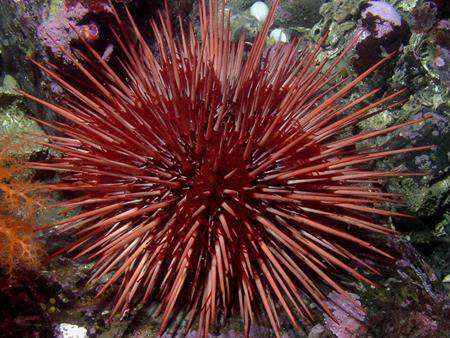
- Genus- Mesocentrotus
- Scientific name- Mesocentrotus franciscanus
- Location- Northeastern Pacific Ocean
You might not believe it, but these small, spiny creatures dwelling in crevices or on the sea floor are some of the longest-living animals in the world.
With an estimated life span of nearly 200 years, the Red Sea Urchins have developed various methods to slow their aging process.
Their body mechanism maintains their telomeres and also does not let oxidative damage by ROS accumulate. They can grow their lost appendages throughout life and, therefore, biologically can live for quite a long period unless they fall prey to animals like otters.
8) Tubeworm
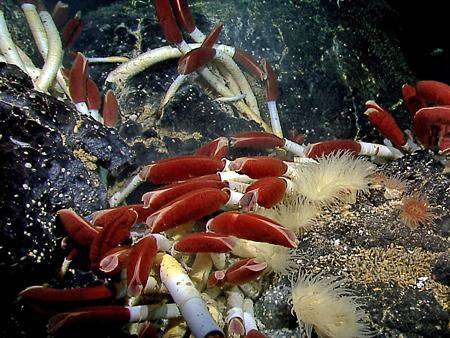
- Genus- Lamellibrachia
- Scientific name- Lamellibrachia luymesi
- Location- Northern Gulf of Mexico
Next, we have a deep sea organism, which holds the record for the second longest-living non-colonial species on the planet. With a confirmed lifespan of nearly 250-300 years, some scientists believe that they are capable of living even beyond 1000 years!
They appear as long plastic straws and provide habitat for many echinoderms like starfish, brittlestar, etc., to clams, mussels, and many other smaller worm species.
Their bodies have numerous growth rings which are added annually, which help researchers to estimate the animal’s age.
7) Greenland Shark
- Genus- Somniosus
- Scientific name- Somniosus microcephalus
- Location- Cold waters of the Arctic and North Atlantic Ocean
The Greenland shark is one of the largest shark species to exist on the planet. Apart from this, they claim to have the longest lifespan of any vertebrate in the world.
With an estimate ranging between 250-500 years, this deep sea animal has numerous mysteries capsuled around it. A study says it’s an adaptive feature of the shark to inhabit the cold, deep waters, which makes their metabolism extremely slow.
This reduces aging, accounting for the animal’s long lifespan. Greenland sharks inhabit the oceans at depths of 2000 m or even more.
6) Quahog Clams
- Genus- Mercenaria
- Scientific name- Mercenaria mercenaria
- Location- New England, Eastern United States, and North Canada
The Quahog clams are undoubtedly the longest-living non-colonial organisms on the planet, with an individual bearing the name Ming, who was estimated to live up to 507 years.
Their immense lifespans can be attributed to their resistance to oxidative stressors with age. They can regulate their macromolecular level cell damage and also the rate of apoptosis, which altogether is responsible for their long lives.
5) Immortal Jellyfish

- Genus- Turritopsis
- Scientific name- Turritopsis dohrnii
- Location- Worldwide distribution mainly in the tropical waters
The next animal is immortal in the true sense, as they have championed aging and death and can be rightly stated as biologically immortal.
They are capable of completely rewinding their life cycle after reaching sexual maturity to its immature stage again and hence begin the cycle all over again.
Though the process may seem to go on indefinitely, in the real world, they die mainly due to predation or diseases in the medusa stage (mobile state) before they reach the polyp (sedentary) stage of their life.
4) Hydra
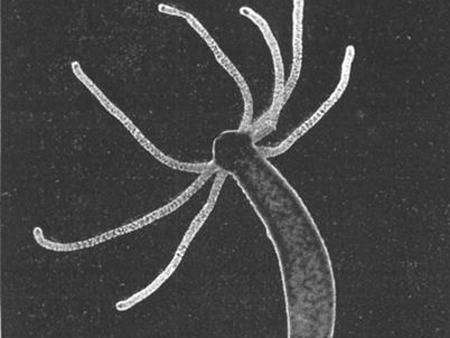
- Genus- Hydra
- Scientific name– Hydra sp.
- Location- Asia, Europe, and American freshwaters
A micro-organism in our list of Animals with the Longest Lifespan, the Hydra is a micro-organism that technically cannot die. Hydra’s immense regenerative properties account for almost immortality. Scientists believe that certain adults can live even up to 1400 years under controlled laboratory conditions.
They have interstitial stem cells, or I-cells, which function synonymous with stem cells, giving the Hydra limitless capabilities of regeneration or replacement of damaged cells.
They, too, undergo the Polyp and Medusa stages in their life cycle, which acts as a renewal of their immature stage of life, and then live all over again.
3) Giant barrel sponge
The giant barrel sponge is the largest species of sponge found on Caribbean coral reefs. Do you know its largest known specimen is estimated to be 2300 years old?
This animal is common at depths of 10 to 120 meters and can reach a diameter of 1.8 meters. Considering its characteristics, it is brownish-red to brownish-gray in color and has a hard or stony texture.
Its form varies, with some individuals being low, squat, or tall. Also, its surface can range from smooth to rough, rugged, and irregular, sometimes with buttresses.
- Genus: Xestospongia
- Scientific name: Xestospongia muta
- Location: Caribbean, Florida, and Gulf of Mexico
2) Black Corals
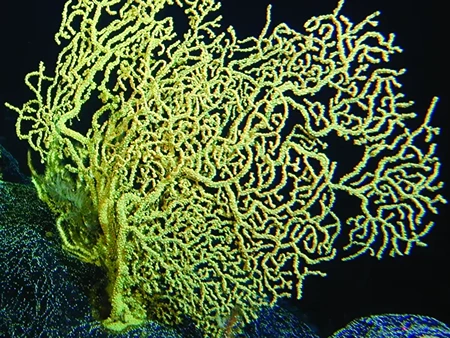
- Genus- Aphanipathes, Allopathes
- Scientific name- Aphanipathes sp., Allopathes sp.
- Location- Worldwide distribution, tropical and subtropical deep waters
Black Corals rightfully deserve the crown as one of the longest-living animals on the planet, after the discovery of a specimen whose age was roughly around 4,265 years!
Asexual reproduction that involves the mobile medusa stage and the sedentary polyp stage is the primary reason for the long lifespans of the Black Corals. New polyps are formed while the base skeleton remains constant.
They hold immense ecological importance as their skeletons provide habitat to the rich and diverse marine life, giving rise to the reef ecosystem. Human activities like harvesting them for pieces of jewelry, pollution, etc. have greatly dwindled their numbers.
1) Glass Sponge
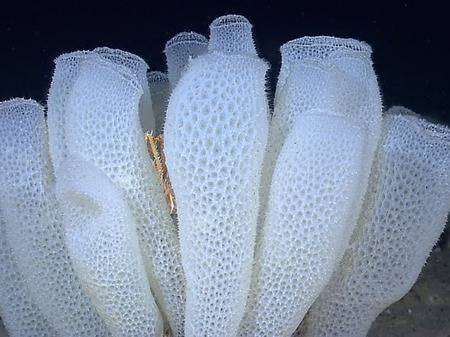
- Genus- Monoharphis
- Scientific name- Monoharphis chuni
- Location- below 1000 m in the waters of the Pacific Ocean
The next species on our list of Animals with the Longest Lifespan is the longest-living organism on earth, the Glass Sponges. The Deep Sea Sponges, also known as Glass Sponges due to their glass-like exoskeleton, have an estimated life span of 15,000 years!
A two-meter-long specimen belonging to the species Monoharphis chuni has an age of 11,000 years. The sponges form spicules, which fuse to give a beautiful glass-house-like appearance.
They can heal wounds and regenerate and continue to live for thousands of years. These are deep sea creatures, usually found at depths greater than 300 m.
Here, we come to the end of today’s article, “Top 10+ Animals with Longest Lifespan (Immortal Animals)”. Hope it has quenched your inquisitiveness. We will be returning soon with many more informative articles, so keep an eye on our website. Until then, goodbye.
FAQs:
Q1. Which animal has the longest lifespan?
Ans. The animal with the longest lifespan is the Glass Sponge, with an estimated lifespan of up to 15,000 years.
Q2. What animal has a lifespan of 1000 years?
Ans. The animals that can survive up to 1,000 years are Hydras.
Q3. Which animal can survive for 500 years?
Ans. Greenland sharks and Quahog clams can survive for 500 years.
Q4. Can any animal live for 300 years?
Ans. Yes, animals like Tubeworms and Greenland sharks can live for 300 years.
Q5. What was the first animal on Earth?
Ans. Combo jelly was considered the first animal on the earth.
Q6. Can any animal live for 200 years?
Ans. Yes, Red Sea urchins and Greenland sharks are the animals that can live for 200 years.
Q7. Which animal is 15000 years old?
Ans. Glass sponges the animals that live for 15000 years.
Q8. What animal ages the slowest?
Ans. Green land shark is the animal that ages the slowest.
Q9. Which animal has three eyes?
Ans. The tuatara is a species of lizard that has three eyes.
Q10. What animal can live infinite years?
Ans. Immortal jellyfish can live infinite years.
Q11. What dog has the longest lifespan?
Ans. Australian cattle dog was noted to live 29 years. It is the dog breed with the longest lifespan.
Q12. What is the shortest living animal?
Ans. The mayfly is the species that has the shortest lifespan i.e. 24 hours or for females 5 min.
Also Read:
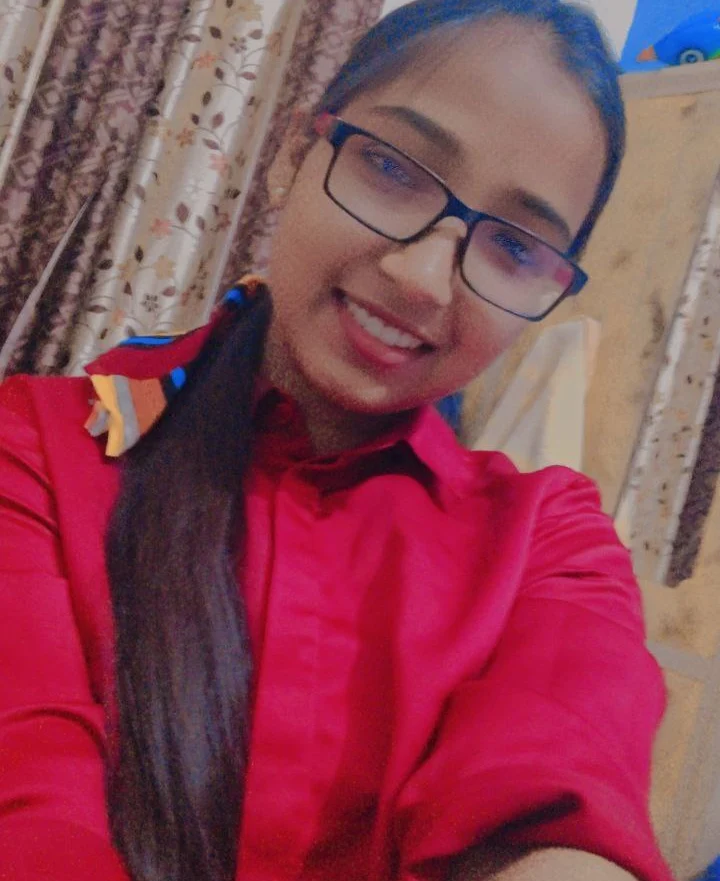
As a content writer, I like to write about different niches. I have a curiosity about nature and animals. And like to learn about them. Through my writing, I like to share my experience and knowledge with you. I hope you are enjoying it too.
